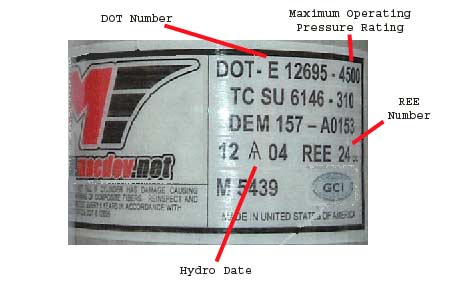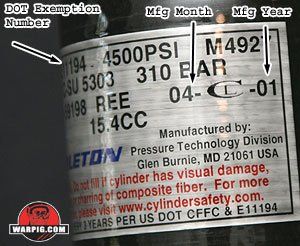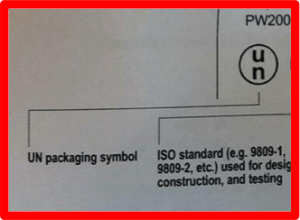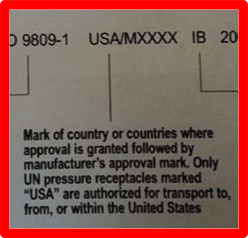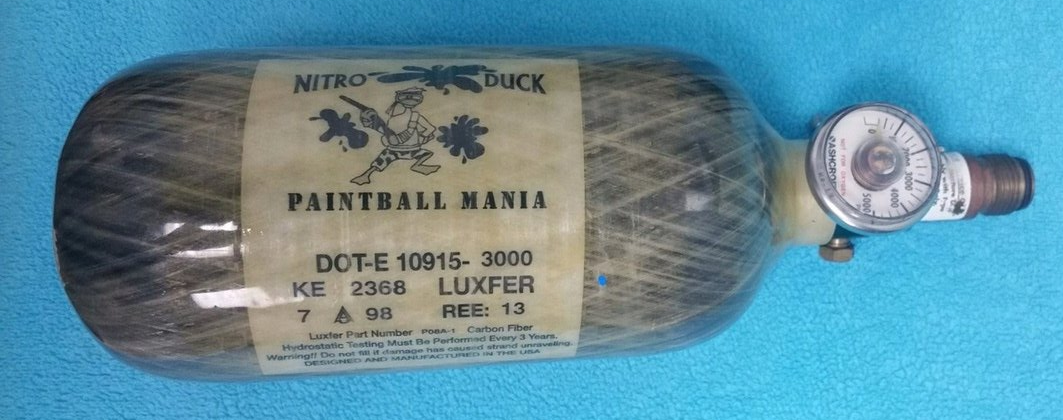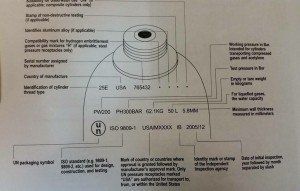NUMBERS ON THE TANKS:
The DOT Number is the number that is given to a bottle lot to make it easily identifiable by the Department of Transportation.
To the right of the DOT Number is the Maximum Operating Pressure, in this instance it is 4500. This bottle is capable of holding 4500 PSI.
Below the DOT Number is the Canadian equivalent of the DOT Number and to the right of that is the pressure rating in BARs (each Bar is equivalent to 14.508 PSI, so 14.508 X 310 = 4497.48 PSI)
Below that is the bottles SERIAL NUMBERS. DEM 157 – A0153
Below the serial numbers is the HYDRO DATE (or Born on Date). 12 @ 04
The M number signifies the MANUFACTURER.
13ci Compressed Air Tanks – The myth is that tanks this size do not have to be hydrotested because they fall under the 2″ diameter and under 24″ in length. The 3AL specification cylinder re-qualification set forth in CFR49 ss180.205 requires that tanks must be hydrostatically tested and are only exempt from volumetric tests. Similar tanks that are marked 3E do not require hydrotesting.
Be aware of tanks made by Inocom, Luxfer and Carelton that require a 3 year hydro test and 15-year lifespan. Most of these are past their lifespan now. Be careful of what you purchase online.
Drop your tank at any Velocity Paintball location for hydro test. Cost is $30.



